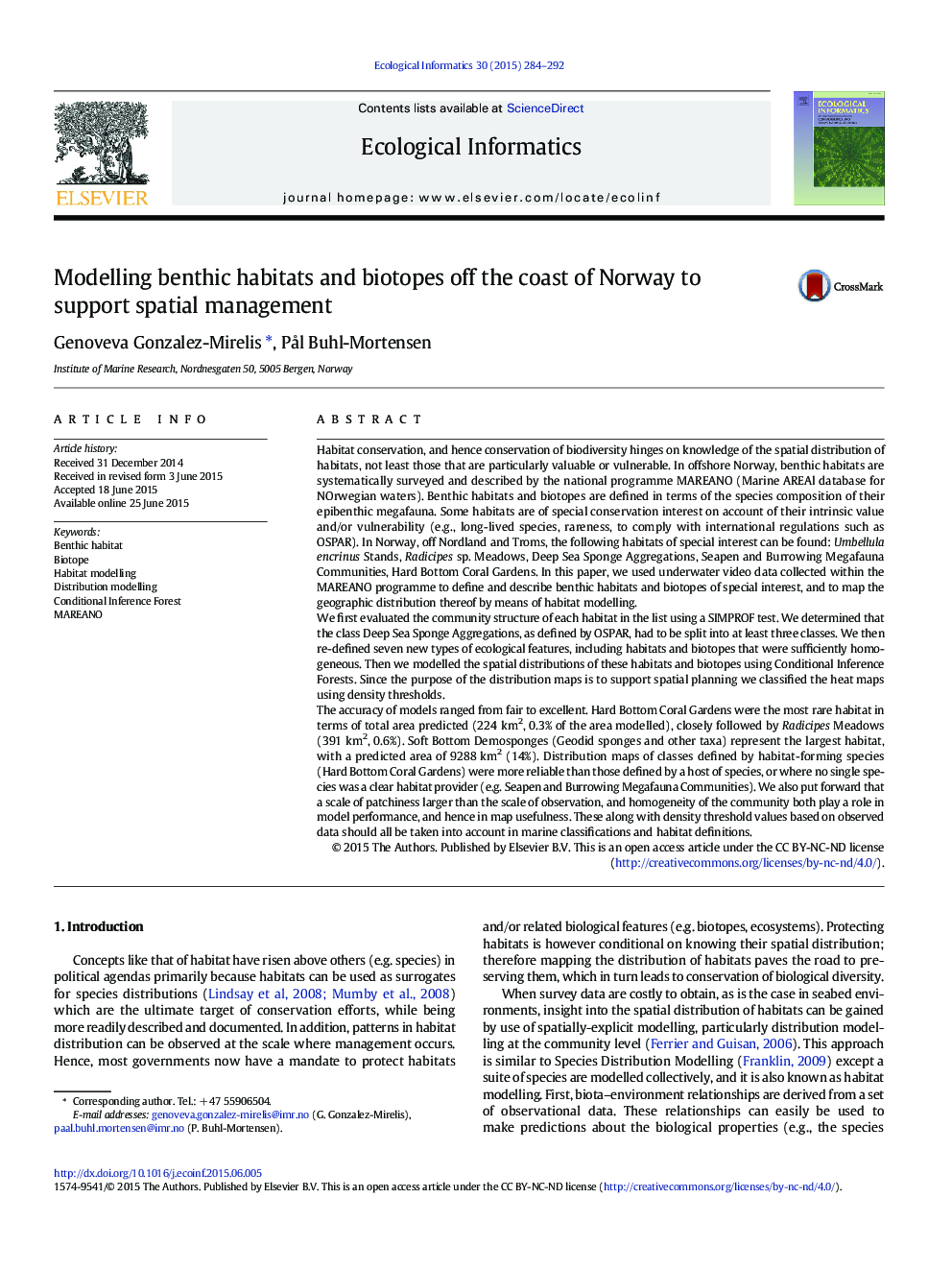| Article ID | Journal | Published Year | Pages | File Type |
|---|---|---|---|---|
| 6295749 | Ecological Informatics | 2015 | 9 Pages |
Abstract
The accuracy of models ranged from fair to excellent. Hard Bottom Coral Gardens were the most rare habitat in terms of total area predicted (224Â km2, 0.3% of the area modelled), closely followed by Radicipes Meadows (391Â km2, 0.6%). Soft Bottom Demosponges (Geodid sponges and other taxa) represent the largest habitat, with a predicted area of 9288Â km2 (14%). Distribution maps of classes defined by habitat-forming species (Hard Bottom Coral Gardens) were more reliable than those defined by a host of species, or where no single species was a clear habitat provider (e.g. Seapen and Burrowing Megafauna Communities). We also put forward that a scale of patchiness larger than the scale of observation, and homogeneity of the community both play a role in model performance, and hence in map usefulness. These along with density threshold values based on observed data should all be taken into account in marine classifications and habitat definitions.
Related Topics
Life Sciences
Agricultural and Biological Sciences
Ecology, Evolution, Behavior and Systematics
Authors
Genoveva Gonzalez-Mirelis, PÃ¥l Buhl-Mortensen,
